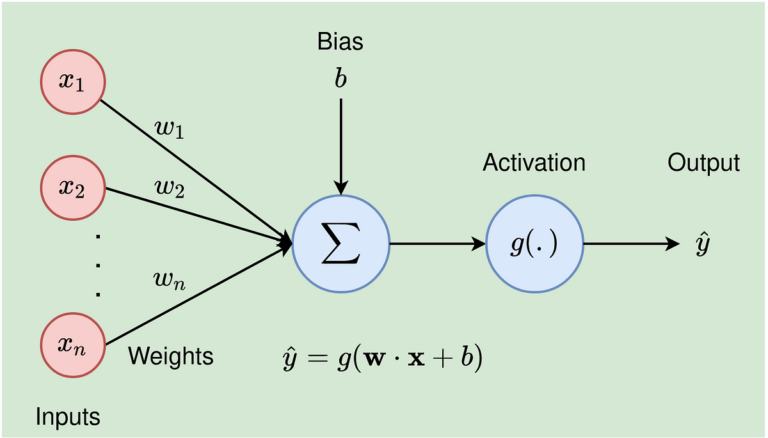What Are Neural Networks?
Table Of Contents:
- Neural Networks?
- What Are Neurons?
- What Are Layers?
- Weights & Biases.
- Activation Functions.
- Feedforward and Backpropagation.
- Deep Neural Networks.
(1) Neural Networks?
- Neural networks, also known as artificial neural networks (ANNs), are computational models inspired by the structure and functioning of the human brain’s neural networks.
- They consist of interconnected artificial neurons, also called nodes or units, organized in layers.

(2) What Are Neurons?
- Neurons are the basic building blocks of neural networks.
- Artificial neurons receive input signals, perform computations, and produce an output signal.
- Each neuron applies an activation function to the weighted sum of its inputs and passes the result to the next layer.

(3) What Are Layers?
- Neural networks are typically organized into layers, which are composed of multiple neurons.
- The input layer receives input data, while the output layer produces the final output or prediction.
- In between, there can be one or more hidden layers that perform intermediate computations.

(4) Weights & Biases.
- Each connection between neurons has an associated weight, which determines the strength or importance of that connection.
- Weights are adjusted during the training process to optimize the network’s performance.
- Biases are additional parameters added to each neuron that help control the activation function’s threshold.

(5) Activation Functions.
- Activation functions introduce non-linearity into the neural network, enabling it to learn complex patterns and make non-linear decisions.
- Common activation functions include sigmoid, tanh, ReLU (Rectified Linear Unit), and softmax.

(6) Feedforward and Backpropagation.
- Feedforward is the process of passing input data through the network from the input layer to the output layer.
- Backpropagation is a learning algorithm that trains neural networks by adjusting the weights and biases based on the prediction error.
- It involves computing the gradient of the error with respect to the network’s parameters and updating them using optimization techniques like gradient descent.

(7) Deep Neural Networks.
- Deep neural networks refer to neural networks with multiple hidden layers.
- Deep architectures allow for the learning of more complex and abstract representations of the input data.


